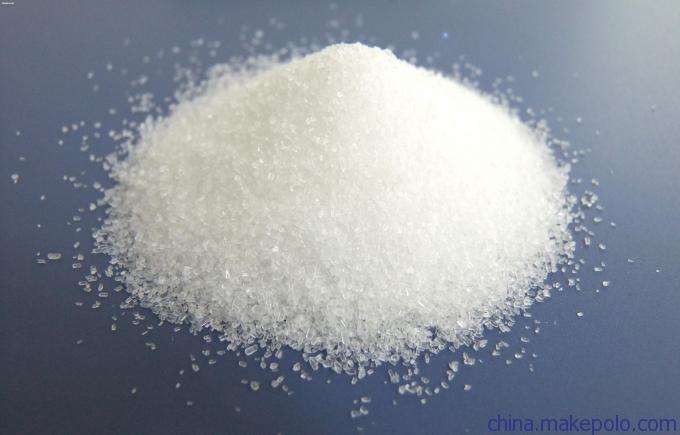Introduction to Organic Fertilization for Flowers
Any flower lover who wants to improve the appearance of the garden will take the time to find the best quality organic fertilizer. Such choices have benefits beyond improving a crop – they also improve the structure of the soil and increase biodiversity in your garden ecosystem. Your flower garden needs to be fed like any living thing – it will not grow well or produce flowers unless it has access to the right nutrients.
Organic fertilizers are better than synthetic fertilizers in many ways. Organic fertilizers release the nutrient slowly and continuously for a longer period of time. it happens in a different way than the synthetic fertilizers. Because of its slow nature the plant cannot have a growth burst and more over-fertilisation. because of that the root development will take place properly and that will have an impact on the plant’s overall strength.
So it’s better to use organic fertilizers rather than the synthetic ones. The horticulturist Dr. Linda Chalker-Scott says: Brand-new fertilizers based on organic sources will have a different impact than a plant that has been fertilised for years. One introduces an assortment of natural materials that will improve soil texture, as well as create conditions that will favour growth of beneficial micro-organisms both essential for plant health.
Don’t you think that by making use of organic fertilizers in your gardening technique, cultivating not just your plants but the earth is a wiser choice and does more good to all? This opening serves as a launching pad to more information regarding the functions and perks organic fertilizers possess for flowering plants.
What Qualifies as an Organic Fertilizer?
Organic fertilizers are essential when doing the right thing as a gardener. For people who care about their flower gardens staying natural, attractive, and healthy, organic fertilizers are the way to go. These fertilizers come from sources such as plants, animals, or minerals and, before being put to use, are only subject to minimal processing so that the nutrients remain in their bioavailable form.
Definition and Characteristics of Organic Fertilizers
Organic fertilizers are natural and derived from living material. They usually contain not only the macronutrients that form the numbers on the bag – nitrogen, phosphorus and potassium – but also a host of micronutrients that plants need to thrive. Unlike synthetics, they don’t carry the risk of building up in the soil in large quantities and damaging soil microbiology, but work to improve soil structure, fertility, and moisture retention, as well as boosting microbial activity that’s beneficial for the ecology of plants and the garden.
Key Components and Sources of Organic Fertilizers That Benefit Flowers
Key components of organic fertilizers include:
- Nitrogen for leaf and stem growth, often sourced from blood meal or fish emulsion.
- Rock phosphate or bone meal for root development and flower production.
- Potassium for plant vigor and disease resistance, which should come from kelp meal or wood ash.
These units provide a framework for flowers to develop as a whole, and support every element from the roots to the flowers.
Regulatory Standards for Organic Fertilizers in Gardening
Such organic fertilizers conform to stringent regulatory requirements established by agencies such as the USDA’s National Organic Program (NOP), which assures that products are made per a series of cultural, biological, and mechanical practices that ‘foster the cycling of resources, promote ecological balance, and conserve biodiversity’. That in turn affirms their quality and safety, as well as their bona fide organic status, using no synthetics.

Assessing the Nutritional Needs of Different Flower Types
When we have some insight into the nutrient requirements of different flower types, we can do a better job of coping with a garden’s varied needs and produce a rainbow of abundant blooms. Flowers, like all plants, need their share of nutrients if they are to flourish.
General Nutrient Requirements Common to Most Flowers
Flowers, like all other living things, need macronutrients – in this case, nitrogen (N), phosphorus (P), and potassium (K), commonly abbreviated to NPK – in healthy proportions. Nitrogen is a major component of chlorophyll, essential for foliage and stems; phosphorus promotes strong root growth as well as better flowering; potassium aids overall plant health and disease resistance. Micronutrients such as magnesium, calcium, and sulfur fuel all kinds of cellular functions, making them especially important for robust plants.
Specific Considerations for Annuals, Perennials, and Flowering Shrubs
- Annuals: Plants that live and die in a single season can often benefit from fertilizers that offer nutrients in high concentrations, which can support the fast growth and flowering times typical of a seasonal life cycle. More nitrogen early on can help the plant increase leaf and stem growth.
- Perennials: Because perennials bounce back from the winter all on their own, planning for them involves a more balanced, even perspective, with emphasis on phosphorus to fuel more roots and increase blooming year after year.
- Flowering shrubs: These typically need a slow-release fertilizer, to provide a gradual release of nutrients. Higher potassium levels help these plants cope with seasonal stresses.
How to Diagnose Nutrient Deficiencies in Flowers
Nutrient deficiencies can manifest in several ways:
- A major symptom of nitrogen deficiency is general chlorosis of old leaves, as nitrogen is very mobile and translocated to new growth.
- Phosphorus deficiency can cause stunted growth and darkening of leaf colors.
- Potassium deficiency is typically seen as browning or scorching around the edges of leaves.
These mineral deficiencies can be tested for, and gardeners can receive exact details on the chemical composition of their soils, along with its pH, using soil tests. Plant symptoms, seen through careful observation by the gardener, can be interpreted with the help of the numbers in a soil test report, and the gardener can alter fertilizer practices accordingly.
Best Organic Fertilizers for Flowers
If you are looking to have a beautiful flower garden, it is important that you choose the right organic fertilizer for flowers, since it will enhance the health and the beauty of your flowers. As compared with the use of synthetic fertilizers, organic fertilizers provide plants with nutrients in more natural form.
Ideal Types of Organic Fertilizers for Flowers
- Fish Emulsion: A fast-acting liquid plant food, it’s high in nitrogen and suits foliage development to leafed plants. This makes it an excellent all-rounder to encourage developing flowers to get a good running start and lay a foundation for springtime blooms.
- Bone Meal: Contains high levels of phosphorus to encourage vigorous root development and heavy flower production; bone meal, especially, is beneficial in encouraging thick, healthy flowering blooms from plants that require strong roots to support extensive blooming.
- Compost: Composts are an excellent slow-release product and function as a fertilizer overall. They help improve soil structure, improve water holding capacity and add beneficial microbes to the soil, all of which help improve root health and help the plants access nutrients to keep them healthy and support their flowering over the long term.
Selecting the Right Organic Fertilizer
The selection of which organic fertilizer is required depends on the specific needs of the flowering species, as well as the composition of the existing soil. For example, flowers growing in acidic soil benefit from the use of composts, which neutralize soil pH and additionally increase the level of organic matter thus enriching the soil and improving its texture. The flowering species with high nutrient requirements, such as roses, would benefit more from richer formulations, such as fish emulsion, or even bone meal.
Recommended Organic Fertilizer Products
For most home gardeners, the easiest-to-apply and most-effective products are Espoma Organic Plant Food and Dr Earth Flower Girl Bud & Bloom Booster. The Espoma formula is balanced enough for most flowering plants, and adds a bit of slow-release nitrogen as well; it’s perfectly safe and maximizes natural plant growth. The Dr Earth product is one of the best dry mixes, and very good for plants like begonias, caladium, and dahlias, all of which benefit from a heavy application of phosphorus, as its formula contains. This promotes an abundance of blossoms and enhanced quality.
If you incorporate these organic fertilizers into your gardening practice, your garden can be beautiful and bountiful while maintaining ecological integrity – and you will be following the rule of three that many gardeners strive to achieve: flowers that will grace your gardens in full bloom and last longer. If you are going to engage in gardening activity for human wellness and satisfaction, follow the manufacturers’ application rates to make the most out of your gardens.

How to Apply Organic Fertilizers to Flowers
Applying organic fertilizers correctly is crucial for maximizing their effectiveness, ensuring your flowers receive the nutrients necessary for robust growth and vibrant blooms. Here are some guidelines for the proper application of organic fertilizers to a flower garden.
Best Practices for Applying Organic Fertilizer
- Learn Your Fertilizer’s Ingredients: Knowing the nutrient composition of your fertilizers is vital so you can apply the correct amount and frequency according to your garden’s needs.
- Mix In At The Right Depth: For granular types like bone meal or compost, incorporate them into the top few inches of soil. This method helps nutrients slowly reach the root zone where they are most needed.
- Apply Near the Root Zone but Not Directly on the Stems: Place fertilizer around the base of the plants, outside the main stem area, to avoid root burn and ensure nutrients are within easy reach of the roots.
Timing and Frequency of Fertilizer Application
- Timing: Apply organic fertilizer early in the growing season to stimulate vigorous spring growth. A mid-season application can help boost flowering and vegetative growth.
- Frequency: The application frequency depends on the type of fertilizer. Slow-release fertilizers like compost may only need to be applied once at the season’s start, while liquid fertilizers such as fish emulsion might require application every 2-4 weeks during peak growth periods.
Adjusting Fertilization Based on Plant Performance and Seasonal Changes
- Monitor Plant Growth and Bloom: Observing your plants’ growth and blooming patterns can indicate whether your current fertilization strategy is effective. Lush growth with little blooming might suggest excess nitrogen, prompting a need to adjust your fertilizing approach.
- Consider Weather and Soil Conditions: Reduce fertilizer application in dry conditions to prevent nutrient overload, which can stress plants. In cooler temperatures, decrease application frequency as plants’ nutrient uptake slows.
Following these guidelines ensures that your garden remains healthy and beautiful. Always refer to the product label for specific instructions and consider the unique needs of your plant species and local climate for optimal results.
Conclusion
I want to end with a recap so that you’re an expert at choosing and using the best organic fertilizer for flowers. Following a sustainable model of garden health pays rewards every time you weed and water. Whether you’re planting new seeds, transplanting or potting from last year, organic is the way to go. It will provide low doses of the essential nutrients plants need, boost soil health and microbes, and with continual use, produce the healthiest, prettiest flowers each season of the year.
Organic fertilizers can help improve overall soil health, increase biodiversity, reduce chemical runoff and lead to more lush, more biodiverse gardens. Gardeners can ensure that they are using the right type of organic fertilizer for their needs by selecting products based on the plant’s specific nutrient requirements and local soil conditions. Espoma Organic Plant Food and Dr Earth Flower Girl Bud Bloom Booster are two examples of products designed to provide specific support to flowering plants.
Also important is learning how to apply these products at the right dose, rate, timing and via the right application method, in order to provide plants with their benefits without overloading the soil environment and the environment at large.
These practices, when combined within their routine of gardening, allow gardeners to have lovely, robust floral displays while enjoying the incentive of contributing to a better Earth. The more organic fertilizers used throughout the world, the more sustainable our future becomes, and the more successful our attempts at gardening can be.
Some references:
- Jobe’s Organics All-Purpose Granular Fertilizer is highly recommended for its balanced NPK ratio of 4-4-4, made from feather meal, bone meal, processed poultry manure, and sulfate of potash. This type is particularly noted for its fast action and the inclusion of beneficial microbes that enhance soil health and nutrient absorption. It’s suitable for a wide range of plants including flowers, vegetables, trees, and shrubs .
- Espoma Plant-tone Organic Fertilizer offers a slow-release formula with an NPK ratio of 5-3-3. It’s derived from natural ingredients like feather meal, poultry manure, and bone meal, making it effective for enriching garden soil and improving plant growth .
- Worm Castings are another excellent choice for organic gardening. They serve as an all-natural, slow-release fertilizer that won’t burn delicate plants. Worm castings help aerate the soil, retain moisture, and can even deter pests like aphids and spider mites .
- Bone Meal is beneficial for plants requiring phosphorus, which is essential for blooming. It’s a slow-release fertilizer that provides phosphorus and calcium, vital for flowering plants and bulbs. It’s best used at planting time .
- Blood Meal is a good source of nitrogen, perfect after growing heavy nitrogen-consuming plants. It can be used early in the season to provide a slow release of nitrogen, which is beneficial throughout the growing period .







